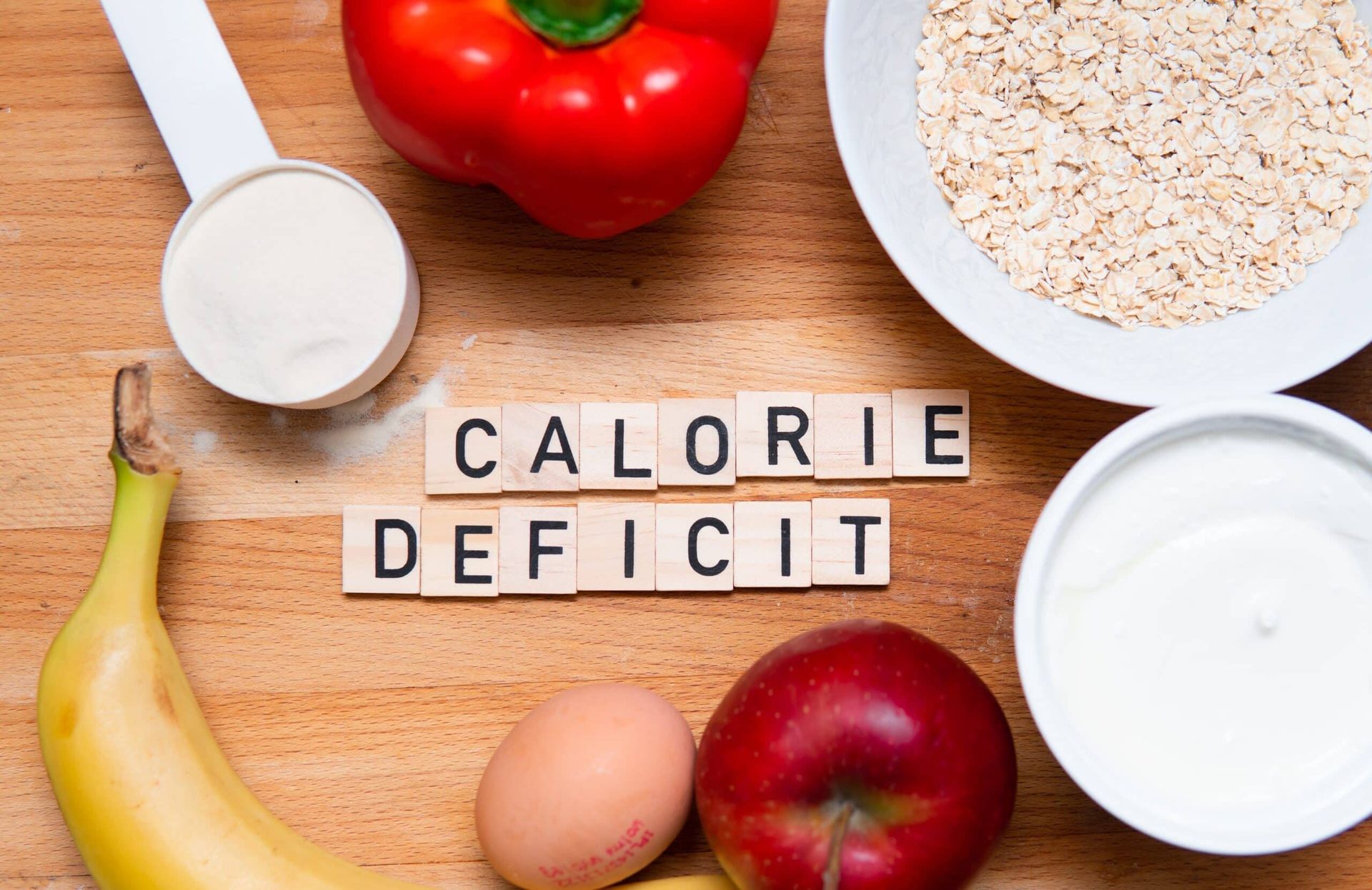Training In a Calorie Deficit
Training In a Calorie Deficit

If your aim is to lose body fat, and you’re well informed, then if you aren’t already, you’ll soon be moving into a calorie deficit. This may involve consuming fewer calories than the body needs to maintain its current weight. The amount fewer will determine the rate at which fat will be lost, however it’s typically best to start with a daily 300-500 deficit as this will be manageable by most people. By weighing daily or weekly you can assess progress and adjust accordingly. Typically, a rate of loss of around 0.5 to 2lbs per week is considered sustainable but like the deficit itself, this will largely depend on the individual.
This science may seem simple but is not infallible and can be helped or hindered by the individuals’ habits, behaviours, and emotional connections to food as well as the types of food that is consumed.
Another factor that plays a role in the success of this endeavour is found within the output portion of the energy equation, specifically activity, or exercise. It’s possible for an individual’s calorie intake to remain the same with their activity increased to create the deficit required through expenditure.
The way in which exercise is approached while in a calorie deficit will have a bearing on the outcome but isn’t as linear as often thought. Many still buy into the simplistic view that introducing more cardio is the move to make. By doing so, calorie output is increased, and a larger deficit can be created. This approach, while sound on paper, can increase the feelings of hunger experienced by the individual, requiring more and more will power, or dedication to resist the urge of eating more and shifting this balance unfavourably.
Another factor to consider is that while in a calorie deficit, we should be aiming to primarily lose body fat and not lean muscle tissue. Resistance training is the primary driving force behind not only increasing lean muscle tissue but is also the best way of convincing the body to keep hold of it during a calorie deficit.
Of course, without the excess raw materials, the body will have a hard time building new muscle tissue during this time. It’s also unreasonable to expect any great leaps in strength or work capacity during this time of energy scarcity so it can be good practice to focus on training further away from sub maximal loads, perhaps parking the pursuit of PBs until you move into a period of maintenance or better yet, building (slight surplus).
By prioritising resistance training during a calorie deficit, ensuring an adequate amount of protein is present in the diet and keeping a keen eye on the duration and quality of sleep, you can heavily stack the odds in your favour when aiming to drop body fat and maintain muscle mass.
The final piece of this puzzle may be found in considering a time frame for this endeavour. An open-ended calorie deficit will likely become tedious and tiresome so planning an end point and undulating this behaviour over a period of weeks/months may provide a stable framework that ensures adherence.

